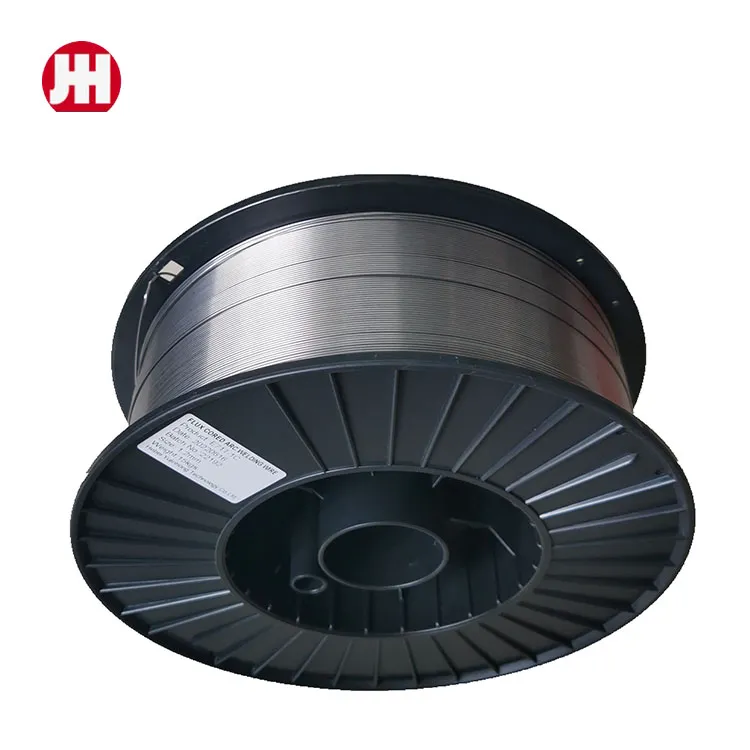mig welding wire size manufacturer
Understanding MIG Welding Wire Sizes A Guide for Manufacturers
MIG (Metal Inert Gas) welding is one of the most popular welding processes utilized in various industries. This technique employs a continuous wire feed as an electrode, making it extremely efficient for a range of applications. One critical aspect of MIG welding is the size of the welding wire, which can significantly influence the quality and strength of the weld. In this article, we will delve into the different sizes of MIG welding wire, factors influencing their selection, and why manufacturers have a pivotal role in this process.
Types of MIG Welding Wire
MIG welding wire is available in several sizes or diameters, commonly categorized as follows
1. 0.030 inches (0.762 mm) This size is often used for welding thinner materials such as sheet metal. It offers better control and minimizes the risk of burn-through, making it ideal for projects that require precision welding.
2. 0.035 inches (0.889 mm) A popular size among hobbyists and professional welders alike, this diameter strikes a balance between speed and precision. It can handle a variety of materials, making it suitable for general-purpose welding.
3. 0.045 inches (1.143 mm) Larger diameter wires are best suited for thick materials, as they deliver higher deposition rates. This size is commonly used in heavy-duty welding applications, especially where robust welds are necessary.
4. 1/16 inches (1.588 mm) or larger These are designed for industrial applications and for welding heavy sections. Their greater mass provides maximum heat input, allowing for deep penetration in robust joints.
Selecting the Right Wire Size
The choice of MIG welding wire size is influenced by several factors, including
- Material Thickness For thinner materials, smaller wires prevent excessive heat input, while larger wires are necessary for thicker materials to ensure proper penetration and fusion. - Welding Position Different welding positions (flat, horizontal, vertical, overhead) can also dictate the wire size. For vertical and overhead positions, smaller diameters are often easier to control.
mig welding wire size manufacturer

- Welding Speed Larger wires enable faster welding speeds due to their higher deposition rate, which may be necessary for projects driven by tight deadlines.
- Type of Welding The welding process and the materials being welded, whether steel, stainless steel, or aluminum, can considerably affect the choice of wire size.
Importance of Manufacturers in MIG Welding
Manufacturers play a crucial role in providing quality MIG welding wires tailored to specific needs. The right manufacturer must ensure that their wires meet industry standards and comply with regulations. Key considerations for manufacturers include
1. Quality Control Consistent quality in the production process is essential to produce reliable welding wire. This includes monitoring the metallurgy of the wire, ensuring it has the right chemical composition and mechanical properties.
2. Customization Many manufacturers offer customized MIG welding wires to meet specific project needs. This might include variations in size, type, and coating depending on the requirements of the end-user.
3. Testing and Certification Manufacturers should conduct thorough testing of welding wires to guarantee performance in various conditions. Certifications from recognized bodies add credibility to their products and assure customers of quality and safety.
4. Innovation As welding technology advances, manufacturers must adapt their product offerings to include new materials and wire types, enhancing efficiency and weld quality.
Conclusion
Choosing the right MIG welding wire size is essential for achieving satisfactory results in any welding project. As the demand for high-quality welds continues to grow, the role of manufacturers becomes ever more critical. They must provide a diverse range of wire sizes that cater to the varying needs of the industry while maintaining high standards of production and innovation. By understanding the fundamentals of MIG welding wire sizes and the importance of manufacturers in this process, welders can ensure they select the appropriate products to achieve optimal results in their respective applications.
-
E316L Welding Rod: Premium 316L Stainless Steel WeldsNewsAug.11,2025
-
Premium SG2 Welding Wire | High-Quality MIG/MAG for SteelNewsAug.10,2025
-
E309 Welding Electrode: Premium Stainless Steel Stick RodsNewsAug.09,2025
-
Premium Solid MIG Wire for Strong, Reliable WeldsNewsAug.08,2025
-
E6010 Cellulose Electrode: Deep Penetration Steel Welding RodNewsAug.07,2025
-
Premium E316L Welding Rod for 316L Stainless SteelNewsAug.06,2025


